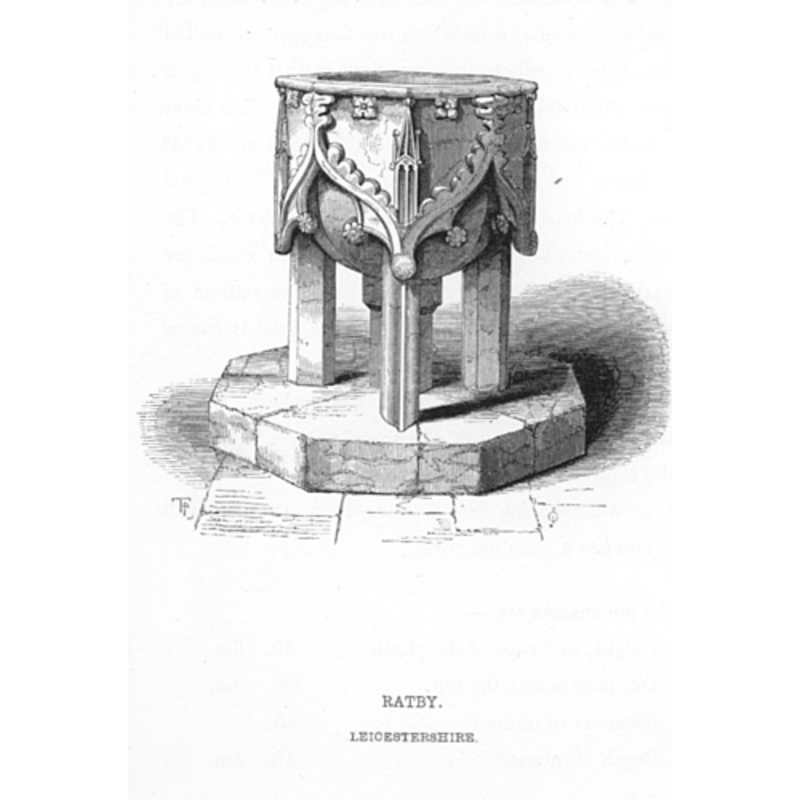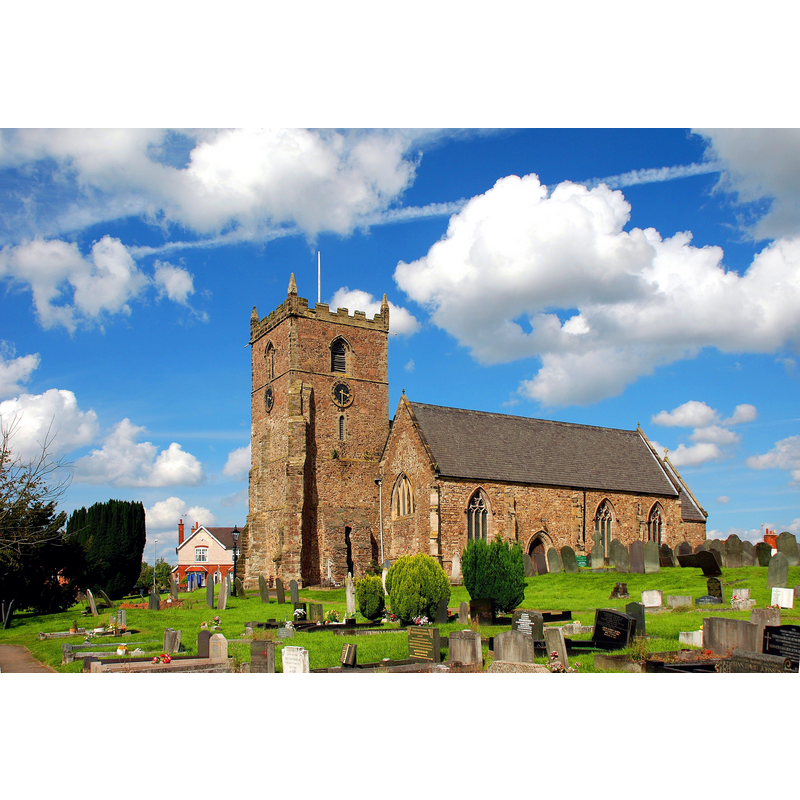Ratby / Rotebie

Image copyright © [in the public domain]
PD
Results: 5 records
design element - architectural - arcade - blind - 4 arches - trefoiled arches
design element - architectural - pinnacle
design element - motifs - floral - rosette - 4 petals
view of church exterior - southwest view
INFORMATION
FontID: 03452RAT
Object Type: Baptismal Font1
Church/Chapel: Parish Church of St. Philip and St. James
Church Patron Saints: St. Philip & St. James
Church Location: Church Ln, Ratby, Leicester LE6 0JF, UK -- Tel.: +44 16 2396520 / +44 16 2393768
Country Name: England
Location: Leicestershire, East Midlands
Directions to Site: Located about 5 km W of Leicester, just off (W) the M1
Ecclesiastic Region: Diocese of Leicester
Historical Region: Hundred of Guthlaxton
Font Location in Church: Inside the church, in the W end, S aisle [cf. ChurchNotes]
Century and Period: 14th century (mid?), Decorated
Church Notes: The Bradgate Team Ministry site [www.bradgate.leicester.anglican.org] [accessed 4 December 2006] notified that the church needed to be closed in 2000 due to the discovery of dry rot in the tower. The Parish was at the time collecting funds for "eradicating the dry rot and restoring the church's ancient font". The Ratby Church was re-opened on 3 November 2002, after a restoration that included "the 15th century Grey family font".
Font Notes:
Click to view
There is an entry for Ratby [variant spelling] in the Domesday survey [https://opendomesday.org/place/SK5105/ratby/] [accessed 27 July 2019]; it mentions a priest but not a church in it, though there must have been one there. A font at Ratby is noted and illustrated in Upcott (1818). Paley (1844) describes it as "a very singular font" and thinks its execution "coarse and rude". It has an octagonal shape at the upper rim, a shape created by the pinnacles which divide the basin sides into four and the finials of the basin arcade which add the other four angles to the upper rim of the basin, while the actual shape of the basin under all that ornamentation is actually hemispheric. The base is made up of a central octagonal pillar and four irregular corner shafts, all raised on an octagonal plinth. There is a 1890 pencil drawing by W.H. Cowlishaw in the Prints & Drawings Study Room, level E, Victoria & Albert [ref.: D.453-1908] that includes the font here. Listed in Cox & Harvey (1907) as a noteworthy baptismal font of the Decorated period. Listed in Tyrrell-Green (1928) as a baptismal font of the Decorated period ornamented with an overhanging arcade of foliage arches. Noted in Pevsner (1984): "Font. Probably mid-C14. Circular, with four big nodding crocketed ogee arches rising up the bowl." The Bradgate Team Ministry site [www.bradgate.leicester.anglican.org] [accessed 4 December 2006] informs: The font originally stood in Groby Old Hall, family home of the Greys. One of Sir Edward Grey's sons was baptised in it in 1440. There was no church in Groby at the time, and Sir Edward did not care to bring his son to Ratby Church because the road was 'so foul'. The font was later moved to Ratby." The entry for this church in Historic England [Listing NGR: SK5131105963] notes: "Parish Church. C13, C14, C15, restoration of 1881 [...] C14 octagonal font with crocketed nodding ogee panels to the sides, pinnacles and octagonal shafted base now with replaced supports."
COORDINATES
Church Latitude & Longitude Decimal: 52.649, -1.24301
Church Latitude & Longitude DMS: 52° 38′ 56.4″ N, 1° 14′ 34.84″ W
UTM: 30U 618861 5834675
MEDIUM AND MEASUREMENTS
Material: stone, unknown
Font Shape: octagonal (mounted)
Basin Interior Shape: round
Basin Exterior Shape: octagonal
Drainage Notes: lead lining
Rim Thickness: 10 cm
Diameter (inside rim): 60 cm
Diameter (includes rim): 80 cm
Basin Depth: 40 cm
Font Height (less Plinth): 105 cm
Notes on Measurements: Paley (1844: unpaged)
LID INFORMATION
Date: modern
Material: wood
Notes: Paley (1844: unpaged) reports a plain flat cover ca. 1844
REFERENCES
Bond, Francis, Fonts and Font Covers, London: Waterstone, 1985 c1908
Cox, John Charles, English Church Furniture, New York: E.P. Dutton & Co., 1907
Paley, Frederick Apthorp, Illustrations of Baptismal Fonts, London, UK: John van Voorst, 1844
Pevsner, Nikolaus, Leicestershire and Rutland, Harmondsworth: Penguin Books, 1984
Tyrrell-Green, E., Baptismal Fonts Classified and Illustrated, London: Society for Promoting Christian Knowledge: The Macmillan Co., 1928
Upcott, William, A bibliographical account of the principal works relating to English topography, London: Printed by Richard and Arthur Taylor, 1818
